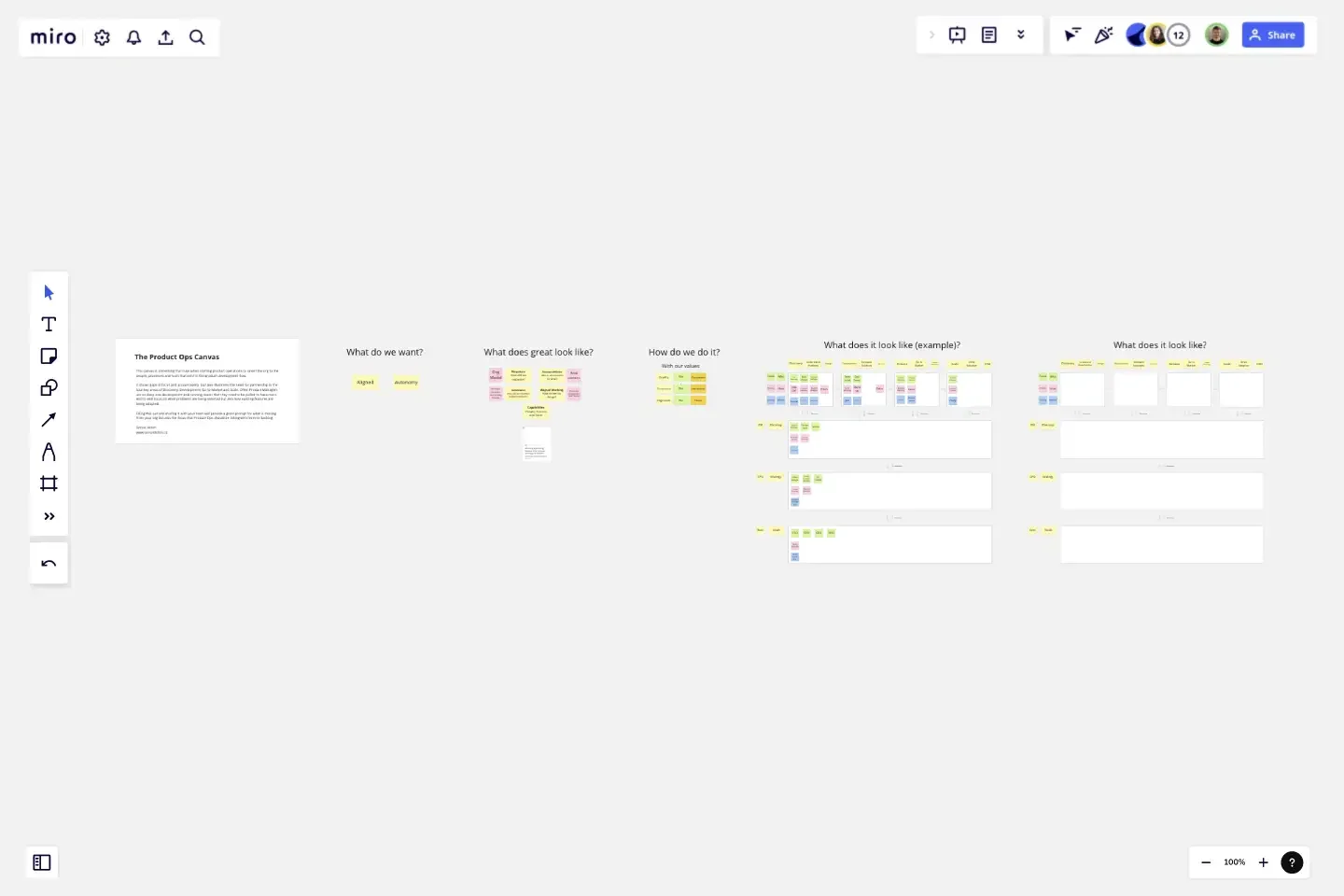Product Ops Canvas
This canvas will help you map out product operations within your organisation so you can build alignment, transparency and quality.
Using this canvas you can capture the people, processes and systems that makeup your product development process. Use this during your interviews to create a shared view of your method.
How to use this board:
Step 1 - Copy this board and identify who in your organisation would be responsible for defining discovery, development, go to market and customer success
Step 2 - Meet with each area and capture the people involved, the ways they work together and the systems used to record work
Step 3 - Share this back to the wider group so they can give feedback on inflows and outflows between areas
Step 4 - Structure and develop documentation in your knowledge management system of how theses phases work themselves but also how they work together. Be sure to be clear on what meetings (Synchronous) and what systems of record (asynchronous) are used.
This template was created by Simon Hilton.
Get started with this template right now.
Swimlane Diagram Template
Works best for:
Flowcharts, Diagrams, Workflows
A swimlane diagram shows you which stakeholders are responsible for each area of your critical processes. You can use it to understand current processes or plan new ones.
Official 5-Day Design Sprint
Works best for:
Design, Desk Research, Sprint Planning
The goal of a Design Sprint is to build and test a prototype in just five days. You'll take a small team, clear the schedule for a week, and rapidly progress from problem to tested solution using a proven step-by-step checklist. Steph Cruchon of Design Sprint created this template for Miro in collaboration with design sprint gurus at Google. This Design Sprint template is designed specifically for remote sprints so you can run productive and efficient sprints with colleagues around the world.
Idea Funnel Backlog
Works best for:
Design, Brainstorming, Agile Workflows
An Idea Funnel Backlog enables you to visualize your backlog and restrict the number of backlogged items at the top. In doing sos, you can prioritize items on your list without having to engage in unnecessary meetings or create too much operational overhead. To use the Idea Funnel Backlog, break up the funnel into different phases or treat it like a roadmap. Use the Idea Funnel Backlog as a hybrid model that combines your roadmap and backlog into one easily digestible format.
Sales Strategy Gantt Chart
Works best for:
Strategy, Planning
Creating and executing a sales strategy requires meticulous planning. The Sales Strategy Gantt Chart template helps you map out every step of your strategy, from goal setting to implementation and review. Visualize key activities, set timelines, and assign tasks to ensure your sales team stays focused and aligned. This template enables you to track progress, measure performance, and make data-driven adjustments for better sales outcomes.
Timeline-Retrospective
Works best for:
Timeline, Planning
Use the Timeline Retrospective template to review project progress and outcomes. It’s ideal for identifying what worked well and what didn’t, facilitating continuous improvement. This template helps teams reflect on their performance and make informed decisions for future projects.
UML Sequence Deployment Pipeline Template
Works best for:
UML
The UML Sequence Deployment Pipeline Template in Miro visually maps the sequence of steps in an automated deployment pipeline, helping teams in software development and deployment. It helps identify bottlenecks, standardizes the deployment process, and facilitates new member onboarding for continuous improvement.
